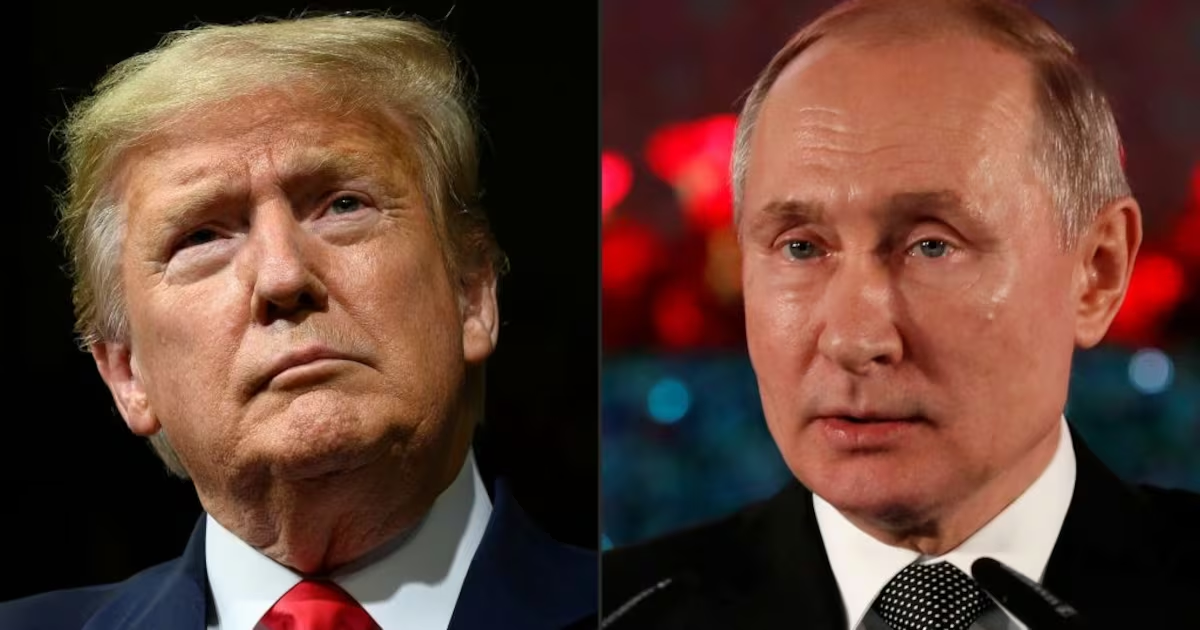MEXICO CITY—As he prepared for a trip to the border with Mexico, President Donald Trump was musing about the rising pandemic death toll in the United States. Too much testing, he said. And at a rally that evening in Phoenix, where COVID-19 cases have mushroomed, Trump turned to a familiar target: Mexico and problems south of the border that his vaunted wall along the frontier supposedly will keep out.
California “didn’t want the wall—but they wanted the wall,” he said with a rhetorical flourish. “Why? Because right next to San Diego there’s a wonderful town in Mexico, you know the town, I won’t mention the name, but they’re heavily infected with COVID,” he told the cheering crowd.
That wonderful town is Tijuana, which Trump previously called “the most heavily infected place anywhere in the world.” And it’s true that Tijuana has been hit hard by COVID-19, but a fact check found more cases in neighboring San Diego County USA.
Verifiable data often are overlooked when Trump talks about Mexico, but when it comes to the pandemic—what Trump has been calling “the plague”—facts really are murky. Mexican President Andrés Manuel López Obrador, widely known as AMLO, has pursued a pandemic strategy similar to Trump’s proposal: little or no testing. And it’s created a situation in which Mexico’s infection rates are almost impossible to ascertain, with accusations mounting of dramatic COVID-19 mortality undercounts.
Trump and AMLO have managed between them to put populations on both sides of the border at enormous risk. Add Brazil’s President Jair Bolsonaro to the list and the Americas take the global prize for willful ignorance costing, now, hundreds of thousands of lives.
But, perhaps because the U.S. reaction to the pandemic has been such an egregious failure and Brazil’s death toll has reached dizzying heights, Mexico’s coronavirus response has slipped somewhat under the radar. Trump may tell his fans that he slowed testing to keep the infection statistics low (and then claimed implausibly that he was joking, and then said he wasn’t), but that’s been AMLO’s pattern in Mexico for a long time.
Mexico’s coronavirus czar—who has called testing “a waste of time, effort and resources”—boldly predicted last month that the country’s coronavirus pandemic would peak around May 8. Hugo López-Gatell also stated the death toll would top out around 6,000 COVID-19 fatalities, then started revising his predictions upward—settling on 30,000 to 60,000 deaths.
Six weeks on, the coronavirus pandemic has yet to peak in Mexico. The death toll, meanwhile, has raced past another grim milestone, surpassing the 23,000 mark. Mexico recorded 6,288 new COVID-19 cases on Tuesday, its highest daily total to date.
López-Gatell also insisted in late May that the pandemic’s curve was “flattening”—something he said was proven by government actions causing a 75 percent reduction in new cases—but he later compared the pandemic to a “mountain range” with plenty of peaks and valleys.
“Every week he says that next week will be the peak,” said Malaquías López-Cervantes, public health professor at the National Autonomous University of Mexico (UNAM).
“It’s now a national joke,” says López-Cervantes. Wits suggest the youthful looking 51-year-old coronavirus czar will hit retirement age and still be saying, “We are about to reach the peak of the pandemic.”
Meanwhile COVID-19 has ravaged parts of Mexico, especially the Mexico City area, where funeral homes and crematoria report a crush of corpses. A count of death certificates in Mexico City by the magazine Nexos found 17,310 excess deaths between March 30 and June 7—3.2 times the normal number—when compared to the same period of the past four years.
López-Gatell has consistently put a positive spin on the government’s stingy pandemic response, which on the health side has eschewed widespread testing and contact tracing and instead focused on disease modeling, predictions, and plenty of talk.
On the economic front, AMLO has pushed austerity, with loans for only the smallest of businesses and an advance payment of some social benefits.
AMLO—who speaks daily for two-plus hours in a morning news conference—has provided plenty of optimism, too, saying in April that Mexico “has been able to tame the pandemic,” as the death toll trudged along, then galloped ahead.
Now as Mexico opens up its economy, its outlier response to the coronavirus crisis is coming under scrutiny, especially its policy of non-testing. Mexico performs just 3.3 tests per 1,000 people. The rate in the United States is 25 times greater.
The approach of not testing and depending on disease modelling, López-Cervantes said, leaves health officials with limited information on the pandemic, but fits a “maximum savings strategy” in which only the sickest of patients are tested. In his own family, López-Cervantes spoke of a nephew who was hospitalized with COVID-19 symptoms and went days without being tested.
As Mexico’s pandemic problems spread, Trump has opportunistically pointed south as problems mounted at home and, according to the Associated Press, floated the idea that travel from Mexico was spreading the coronavirus. (He hasn’t quite gone that far in his own public remarks or tweets, although the Tijuana jibe is an obvious feint in that direction.)
“It’s pretty idiotic to blame Mexico since any U.S. border state has more reported cases than its Mexican opposite,” said Xavier Tello, a physician and health policy analyst. “Mexico is lost and doesn’t know how many cases it has. But the U.S. has been open longer and its control [of the pandemic] has been weaker.”
The Trump administration, in fact, has pushed for Mexico to reopen the maquiladoras, or factories-for-export, in Mexican border states, which form integral parts of continental supply chains.
Neither country has risen to the occasion in the pandemic. But the tardy responses—and presidents’ attitudes and actions—have drawn plenty comparisons, and the two presidents appear to be on much better terms than, say, Trump and Canadian Prime Minister Justin Trudeau.
Trump on Tuesday lauded AMLO as a “great guy” he hoped to meet soon at the White House. López Obrador, who has never said a cross word about Trump, said Wednesday that he was open to such a meeting, which would be his first foreign trip since taking office 18 months ago.
AMLO, like Trump, has wanted to minimize the economic impact of the pandemic and waited until the last minute to order schools and businesses closed. The Mexican president only grudgingly gave up holding rallies in March and started touring the country again in June. Like Trump, he doesn’t wear a mask—and the country’s coronavirus czar has wavered on recommending the use of masks.
AMLO has said science would guide his response—but he pulled out a pair of prayer cards at a March press conference and said the images were his “bodyguard.”
He’s also followed the rules at his convenience. AMLO violated safe-distancing guidelines in late March to greet the mother of convicted drug cartel kingpin Joaquín “El Chapo” Guzmán. But he cited the same rules earlier this week for avoiding the families of people missing in Mexico’s drug war—who accused him of paying more attention to El Chapo’s mother than victims of violence.
With AMLO quick to turn the page on the pandemic—and constantly raising new controversies in his daily press conferences—discontent over the COVID-19 response is falling on the coronavirus czar.
López-Gatell was feted as a star in the early days of the pandemic, coming across as a calm if verbose coronavirus czar who was guiding the country through turbulent times. An epidemiologist trained at Johns Hopkins, he explains complicated science in his evening briefings, which have become known as “the nightly novella.”
He even drew comparisons to his U.S. counterpart Dr. Anthony Fauci—who has differed publicly with Trump on the testing issue—but López-Gatell has felt forced to defend his boss’ controversial decisions, even those not based on science.
López-Gatell said in defense of the president carrying out business as usual as the pandemic took hold that AMLO is a “moral” force, not a force that spreads contagion.
Whereas Fauci “has not had a problem saying ‘Trump was wrong,’” said Carlos del Río, a Mexican infectious disease expert at Emory University, López-Gatell has played the part of AMLO’s “spokesman” and assumed a political role.
“There’s absolutely no comparison” between the coronavirus czars Fauci and López-Gatell, del Río said. “You’re comparing Babe Ruth to someone who plays in the minor leagues.”
Scientists have also questioned the Mexican decision to depend so heavily on a detection system known as Sentinel Surveillance, which takes samples from 475 clinics around the country, rather than testing individuals.
López-Cervantes, the UNAM epidemiologist, compared the system to an opinion poll: it provides an accurate national picture, but becomes less useful for gauging state and local situations.
“They’re using inconclusive and incomplete data,” he said, “And they think what they have is infallible.”






